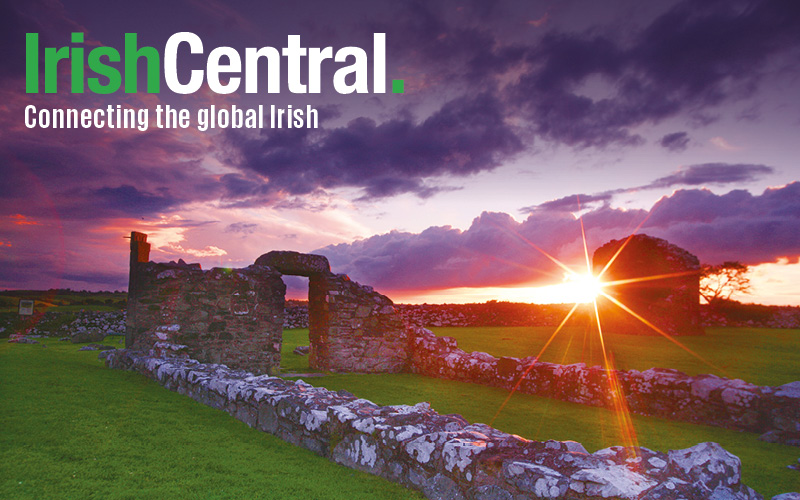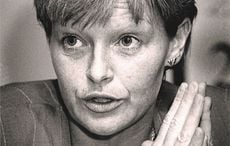The recent stag hunting debate highlighted an increasing divide in Irish society: Dublin vs. the rest.
Of course, this phenomenon really just represents the latest manifestation of the centuries-old distinction between the Pale and the rest of Ireland. It is also a reinvigoration of a debate that has raged ever since the Grimm brothers wrote the story “Town Mouse and Country Mouse.”
Underlying much of the recent commentary emanating from Dublin are snide assumptions that rural Ireland consists essentially of uneducated barbarians. The facts, however, suggest precisely the opposite: Take the HEA report “Who Went to College in 2004? A National Survey of New Entrants to Higher Education”
As in previous reports, counties along the western seaboard all enjoy the highest rates of admission to higher education with Sligo at 70.5%, followed by Galway (67.4%), Kerry (67%) and Mayo (66.8%). Dublin however, sits close to the bottom of the table with only 50.8% going to third level, falling to 11.7% in Ballyfermot.
Allied the fact that crime rates are far higher in Dublin than in rural Ireland, the unavoidable conclusion is that uneducated barbarians are in fact within the Pale, not outside of it.
Yet, you wouldn’t think it to read The Irish Times. Take for example a recent article: “The future is urban, where 'Up Mayo' politics won't do.”
Typical of the readers comments it provoked were: “Can't we just split the country in two. Have pales of civilisation, and leave all the farmers and their rural representatives to live as they choose. We could have two different time zones. One on Greenwich Meridian Time [sic.], and the other thirty years in the past.”
Zulu time, indeed. Others yearned to see politicians with “IQs higher than room temperature and followers who care more about their country than obtaining planning permission for a cow-shed.”
It is unfortunate to see such sneering hostility emerging. Yet there is no doubt that we are beginning to see two Irelands emerge with markedly contrasting values and lifestyles: Greater Dublin and the rest of Ireland.
Dr. Lorcan Sirr and Conor Skehan who jointly wrote the piece, both lecture in the college of engineering and the built environment at Dublin Institute of Technology. They say “The Rubicon was crossed in 1966 when the urban and rural populations of Ireland were exactly equal for the first time. Since then, Ireland’s urban area and its population have increased considerably and now almost 60 per cent of Ireland’s population live in urban areas across the State. Around Dublin, the urbanised area has increased by about 150 per cent from 1990 to 800sq km in 2006."
"Research by urban economist Brian Hughes, a member of the Government’s own Expert Group on Population Projections, shows that by around 2070, more than half of Ireland’s population will be living in the Greater Dublin Area….The future is people and the future is urban.”
This statement overlooks one simple fact: nobody in an idyll in Commemara dreams of one day moving to Cabra or Blanchardstown – yet thousands do the opposite every day, sitting blearily on a bus in noisy city traffic, dreaming of a cottage on the Aran islands.
I was one of them myself, until I bit the bullet and abandoned a career in a top Dublin law firm for a better life in West Cork. The reasons are obvious to many of the other urban refugees here, many of whom are Dubliners, born and bred: Amidst the rolling pastures of west Cork, ordinary people, teachers and farmers have spacious homes of the sort Dublin’s millionaires could only dream of, together with acres of gardens, something that is impossible in the city. Added to that are the miles of golden beaches, myriad sheltered harbours and woodlands, as well as vibrant and colorful towns, along with airports, hospitals and all the usual facilities close at hand.
For decades now, people have left England, Holland, Germany, and the U.S. to make a home in west Cork and other similar parts of rural Ireland. In addition to our more recent Eastern European and African immigrants, this makes west Cork a truly cosmopolitan place.
Ah, you may have fresh air says Town Mouse, but what about culture and theatre? For starters, there's Kinsale arts week this week, the Cork Midsummer's festival, the West Cork chamber music festival, the West Cork literary festival -- or head out to Cape Clear island for the storytelling festival.
It is a similar picture of thriving cultural and community life throughout all of rural Ireland, from Waterford to Donegal. And there is nothing wrong with the traditional Irish values of family, humility, friendliness, community either, nor the more human pace of life.
In their analysis of the inevitability of the Ireland’s shift form rural to urban, Sirr and Skeehan appear not to have heard of that internet thing, nor of the recent development of Ireland’s hard Infrastructure. I live in west Cork but, due to the internet, I work mostly in Britain and the United States. My next door neighbour works mostly in India and Russia.
The vast swathes of concrete boxes hastily thrown up around the M50 are no place to raise a family, nor is much of Dublin’s inner city. That’s why the future of rural Ireland is assured. People and companies alike will want to be there. Also, that’s where most Irish people feel most at home. An apartment without a vegetable patch and a tool shed is an unnatural environment for an Irishman.
Interestingly, the authors say that “the heave against Enda Kenny was a fight between new urban and old rural Fine Gael” and that the political culture will change as a result of urbanisation: “It is significant that the downward trend applies to all three [main] parties, suggesting that it is not just the parties’ individual policies which are turning voters off but their political style and culture. The 'Up Mayo' political ethos doesn’t wash as well in urban areas.”
It is strange that they have such a remarkably simplistic view of rural Ireland. The greatest practitioner of Irish gombeen politics was the Dubliner, Charlie Haughey. And of course, many rural people want to see Irish politics move beyond the civil war too.
In saying “urbanisation is unstoppable, and it’s where future votes and voters are” they are completely missing the cultural mood, and the effect of new technology and infrastructure. The recession has put in to focus the important things in life: family, nature, community. This trend toward an increased emphasis on quality of life was already underway pre-recession, evidenced by the popularity of television programmes like “Escape to the Country” and “River Cottage.”
People have seen through the lies of the rat race: there is no joy in hours of commuting from cramped accommodation to an office cubicle. This is not the future the Irish people will choose. Modern workplace trends increasingly support telecommuting and part-time work, many firms want to relocate to less congested, cheaper areas. Ireland’s new motorways and the reopening of old railway routes means that once remote parts of Ireland are now much closer to ports airports and main cities than ever in history.
I’m fond of dear auld Dublin and find it a great place to visit, but it mightn’t be so nice if, as authors predict, it rises in population to “nearly 2½ million people in the next 15 years."
Given current levels of emigration that seems very unlikely, but if it does become such a megalopolis, it will not suddenly transmutate in to Paris or NYC, but will more likely resemble the dull sprawling gray suburbia of the Birmingham conurbation, except with quasi-American accents. All of which will only make people all the more keen to escape and move to Kerry.
The future’s bright, the future’s rural.




Comments